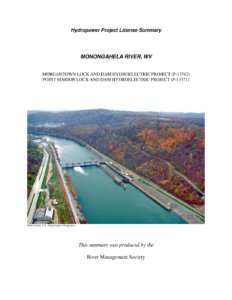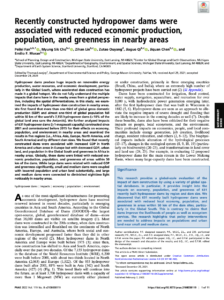U.S. & Canadian governments hold a public listening session for the Columbia River Treaty

One of the many dams on the Columbia River. Photo Credit: EcoFlight
This week, the U.S. and Canadian governments held a public listening session for the Columbia River Treaty. The Treaty, signed in 1961 by the two governments, coordinates hydropower generation and flood control across the vast Columbia Basin.
According to Save Our Wild Salmon’s press release, the “U.S. government negotiators vowed to intensify their work to conclude a new Columbia River Treaty with Canada by early summer as they held a public listening session this week. The two countries have been in negotiations for over four years and a new agreement to upgrade or modernize the Treaty must be reached by the end of summer 2024.”
Treaty operations primarily concern three large Canadian storage dams as well as Libby Dam in Montana, but the consequences of this management are felt everywhere. The coordination of the two countries under the treaty has allowed both to realize flood control and power production benefits.
The Upper Columbia watershed in Canada is a vital source of cold water and flow for migrating salmon and other wildlife downstream. However, considerations for salmon or the health of the river at all are completely absent from the agreement. The Treaty was ratified in a different time, before bedrock environmental laws like the Clean Water Act or Endangered Species Act.
IRU Conservation Associate, Stephen Pfeiffer, whose work focuses on salmon and steelhead recovery, was able to speak during the session. Here’s what he was able to share with the public and hosts:
“The U.S. and Canada must modernize the Columbia River Treaty to include ecosystem function as the third leg of the stool, alongside power generation and flood control. The Treaty, as currently constituted, lays out a narrow, antiquated focus that does not reflect what an ecologically healthy, functioning river system once provided and can provide again for so many communities across the basin.
Tribal Nations and other communities dependent on healthy fish populations were marginalized at the inception of the Columbia River Treaty. Over the second half of the 20th century, the river went from what was still a great salmon-producing network of waterways, to the largest integrated hydropower system on Earth. Many of the basin’s once abundant salmon runs have been on a steep decline ever since.
The outright extinction of many salmon and steelhead runs in the basin is a very real and near-term threat. Climate change impacts in the form of warming rivers, declining snowpacks, and altered flow regimes pose large-scale challenges to imperiled salmon populations and fish and wildlife throughout the basin. A responsive and effective Columbia River Treaty is one that includes ecosystem function as a co-equal purpose and will be an important tool for the region to mitigate and adapt to climate impacts.
The Treaty-outlined purposes of power generation and flood control are critical, but are profoundly biased and ill-functioning when applied to salmon recovery measures and the health of a river. Viewed through the traditional lens of power generation and flood control, salmon runs have only been seen as a cost rather than a benefit – whether in regards to their precipitous decline during the damming of the river or recovery efforts, which often aim for the legally mandated minimum of ESA-delisting.
The Bonneville Power Administration and the Army Corps, U.S. Entity representatives, embody this viewpoint, tasked to focus on power production and flood risk management first.
What this has meant is a decades-long failure by these agencies to produce a legal and effective salmon recovery plan in relation to the management of the hydro-system, despite clear instruction from the court and the science to do so.
A modern Columbia River Treaty that includes ecosystem function as well as the appropriate federal agencies and Tribal entities added on to the U.S. Entity will at last be able to speak for the needs and health of the river.
The main outcome of the session was to include “ecosystem function” into a new treaty and to include more voices for the river such as Tribal nations, federal fisheries, and wildlife management agencies to represent the U.S. government in carrying it out.
The U.S. Department of State leads a negotiating team consisting of representatives from the Bonneville Power Administration, the U.S. Army Corps of Engineers Northwestern Division, the U.S. Department of the Interior, and the National Oceanic and Atmospheric Administration. The U.S. delegation also included expert-advisors from the Coeur d’Alene Tribe, the Confederated Tribes of the Colville Reservation, and the Kootenai Tribe of Idaho.
The next round of negotiations is set for May 16 – 17 in British Columbia. That will be followed by another listening session.
This post originally appeared on News – Idaho Rivers United.


